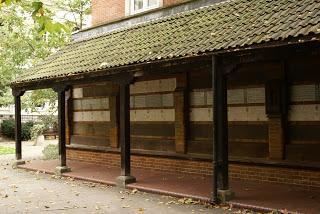 Watts intended his memorial to serve an exemplary purpose: those who saw it should be inspired by its stories of bravery and selflessness. Having considered all those incidents, we can now think about whether they have anything to teach the modern passer-by.
Watts intended his memorial to serve an exemplary purpose: those who saw it should be inspired by its stories of bravery and selflessness. Having considered all those incidents, we can now think about whether they have anything to teach the modern passer-by.Discovering the histories behind the tiles has convinced me that they are more than merely quaint or archaic. True, they do show us aspects of life which have now vanished - from stage lighting using open flames to Zeppelin air raids. At the same time, they are very human stories which do achieve what Watts desired - they can make us think about what we ourselves would and should do in similar situations.
There are, of course, some practical lessons. These include the value of life-saving courses: several of the drownings could have been prevented had the rescuers known how to deal with a struggling person. One of the saddest lessons is that bravery in the heat of the moment can often be futile: several rescuers died trying to save people who had already escaped.
The memorial also throws up contradictions. When children were left in charge of toddlers, terrible accidents involving paraffin lamps, traffic or open water could occur. On the other hand, those children took their responsibilities as seriously as any adult would, even risking (and sacrificing) their own lives to save younger siblings or friends.
What the monument also tells us - with just one plaque - is that such heroism did not end in the 1920s but continues today. The actions of Leigh Pitt, who died in 2007, are recorded in the first and probably last new tile added since the 1920s.

